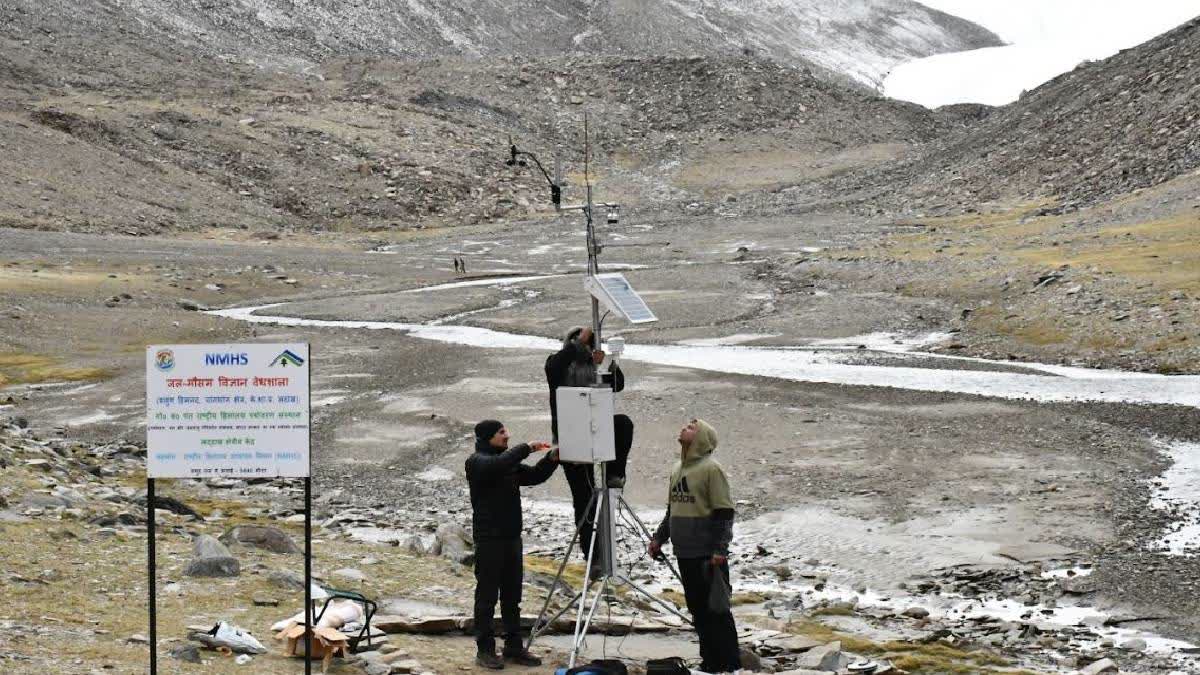Srinagar (Jammu and Kashmir): In a major step to understand and manage the vital glacier systems of the Indian Himalayas, the GB Pant National Institute of Himalayan Environment (NIHE) has established a new Hydro-Meteorological Observatory on the Rulung Glacier in the Changthang region of Ladakh.
This initiative, launched under the National Mission on Himalayan Studies (NMHS) by the Ministry of Environment, Forest and Climate Change (MoEF&CC), aims to provide critical data on glacier dynamics and their impact on regional water systems.
While speaking to ETV Bharat, Dr. Purushottam Kumar Garg, Scientist (R&D) at the Ladakh Regional Centre of NIHE, detailed the project's importance. “The Himalaya-Karakoram region amasses the largest glacier cover outside the polar region, which plays a crucial role in regulating the hydrology of major river systems like the Indus, Ganges, and Brahmaputra. Approximately one billion people rely on the water these glaciers release.”
The project, titled “Assessment of Glacier-Climate Functional Relationships Across the Indian Himalayan Region Through Long-Term Network Observations,” involves a comprehensive assessment of glacial dynamics, morphometry, hydrodynamics, melt-water chemistry, and mass balance within the Indus, Ganges, and Brahmaputra basins.
The Rulung Glacier, situated in Ladakh’s Changthang region, was chosen for its long-term field-based monitoring. Ladakh represents about 50 percent of India’s total glacier wealth. Despite its importance, Ladakh remains one of the least studied regions in terms of glaciological research.
“Ladakh is a vital area for glacier studies, yet it has been under-researched. Our goal is to bridge this gap with comprehensive, long-term observations,” Dr. Garg, who is also the invigilator project, said.
The project began with an expedition to the Rulung Glacier in October 2023, during which initial glaciological mass balance measurements were taken and sites for monitoring equipment were identified. The second expedition, conducted from late July to early August 2024, saw the installation of an Automatic Weather Station (AWS) at an altitude of approximately 5600 meters above sea level. “The AWS is equipped with sophisticated sensors to measure wind speed and direction, snow depth, radiation, albedo, air temperature, and relative humidity,” Dr. Garg explained.
